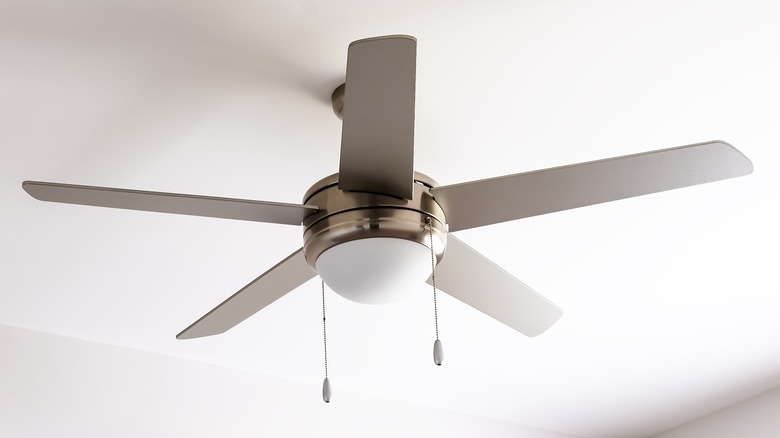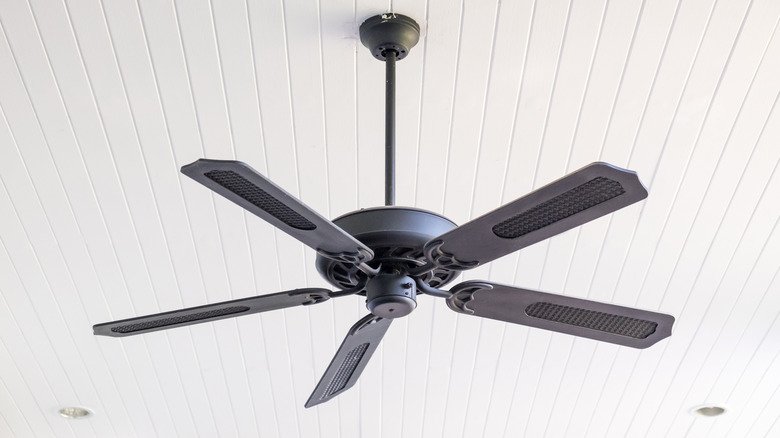This Ceiling Fan Trick Will Save You Money This Summer
During the hotter months, air conditioning can prove to be expensive after months of use. If you're noticing a stark increase in your electricity bills during these times, there's a money-saving trick you may want to know. To save you plenty of cash, while still keeping you relatively cool during summer heat waves, look no further than your ceiling fan.
While it might seem obvious to turn on a fan in place of AC, there's a specific way you can use a fan that will either keep you cooler or warmer. This is achieved by utilizing the specific motions of the fan, either spinning it clockwise or counterclockwise. When a fan's blades are turning counterclockwise, this creates a cooling, downward flow of air that pushes warm air away. This is especially useful during the summer and can provide some respite from the heat when you don't want to use too much power from your AC. When using a ceiling fan for a cooling effect as well as AC, you can raise your thermostat up to 4 degrees Fahrenheit without any discomfort, as estimated by the U.S. Department of Energy.
On the other hand, a clockwise-spinning fan will instead guide air upwards, moving warm air in. So, in the summer you'll want to make sure you're getting the most out of your fan and have it spinning counterclockwise. For most fans, this direction can be changed.
How to change the direction of your ceiling fan
Getting your ceiling fan to spin in the direction you want can be done quickly and easily on many models. First, you'll want to determine which way the fan is actually going. The best way to do this is to stand directly underneath it while it's spinning slowly and watch which direction the blades are turning. Once you've figured out which way it's going, you'll know whether to switch it so it has either the cooling or warming effect you want to save power (the latter of which can be great for the winter).
If you find you need to switch the direction, first turn the fan off and ensure that it's completely still. Then, look at the motor housing in the center of the fan to find a switch. If your fan has one, you can flip it to change the spinning direction of the blades. Once switched, turn the fan back on to make sure it's spinning the way you want (via Home Depot). If you enjoy using this ceiling fan trick, you may want to invest in a remote-control fan or a fan with a wall switch to get the most out of it.

